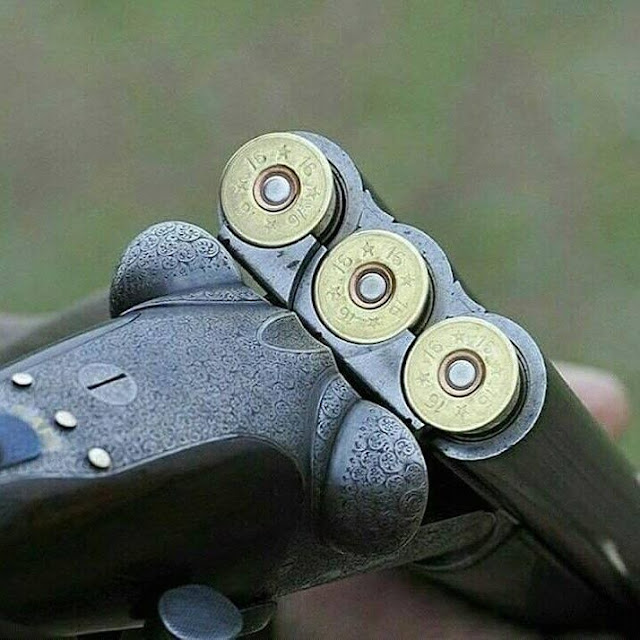
Category: All About Guns
A video about Top 5 Antique Rifles































While the right to keep and bear arms is a right recognized by the Second Amendment, it’s not a right all will choose to exercise. Despite the recent wave of interest in Second Amendment, self-defense, and guns as a means toward the protection of life, many are still on the fence as to whether to become a gun owner. Not sure if you’re ready? Here are some ways to determine whether gun ownership is right for you.
The answer is “no” if you simply cannot or will not be comfortable owning a gun. But let’s explore why that’s currently the case. Your reluctance is due to something: maybe the result of limited experience with guns; a bad experience with guns; the complexity of paperwork and/or gear required to purchase, own, or carry a gun; or the myriad negative media reports about guns.
Limited experience with guns?
It’s okay to admit you have limited experience with guns. At some point, we all were in that condition. But a gun is only as dangerous as the person handling it. In other words, proper training and professionally-guided introductory experiences can bring a level of understanding and comfort to gun ownership and use.
Bad experience with guns?
A bad experience with, well, anything certainly can affect your view of and approach to it, and understandably so. But one way to overcome the anxiety of a bad experience is to replace it with a healthy experience. Also, a bad experience with a gun usually requires someone breaking one of the rules of gun safety or breaking the law. This doesn’t detract from the difficulty of the experience but there may be some comfort in knowing and appreciating that bad experiences are the exception, not the rule.
Complexity of purchase, ownership, carry?
Background checks, permits to purchase, and long-form applications add significant complexity to gun purchases—and these can vary from state to state. Add the sometimes conflicting laws or statutes about gun storage, transport, and private sales and the level of complexity just goes up.
Finally, buying a gun usually includes needing a secure means of storage or transport, a wide range of ammunition choices, cleaning gear, and on and on. These things may seem to make gun ownership so complex that it just doesn’t seem worth it. But it’s not insurmountable. Yes, it requires care and yes it is complex. But lots of resources exist to help navigate all of these things.
Myriad negative media reports?
Anecdotally, people often say they can’t read the news without reading about another shooting. The key here is simply to make sure you are getting a truly balanced reporting of gun news. Moreover, your responsible ownership and safe use of a gun actually contribute to a safer society. Do a bit of research on gun ownership in the U.S., the number of firearms-related accidents and/or crime, and make some sound judgments about what is actually the problem. And consider how you can be a part of the solution!
Ready to Buy?

Let’s say you’re ready to buy your first gun—a handgun you intend to keep in your home for basic self-defense. You don’t intend to carry it concealed (at least not yet) but want something reliable, simple to use, and affordable. A great first gun that meets these criteria would a revolver chambered in .38 Special.
Reliable. Depending on the manufacturer, revolvers are some of the most reliable handguns made. Yep, they look “old school” and yet they’ve been around for a long time; and reliability is one of the main reasons for that. Compared to other handguns, they also require minimal care and cleaning to maintain peak operating capability.
Simple to Use. While virtually all police and military handguns are auto-loading pistols, these types of guns are also more complex to operate. They require additional skills for managing magazines and reloading, slide functions and clearing, and some may have external safeties to contend with. All skills that can be practiced and mastered, yes. Just more complex. If simplicity is your goal, it’s hard to beat a revolver. To shoot a loaded double action revolver, just squeeze the trigger. To keep shooting, just keep squeezing. Don’t want it to fire? Don’t put your finger on the trigger.
Affordable. You can find used revolvers in excellent condition at your local gun stores or on GunsAmerica. Also, .38 Special target ammunition is relatively inexpensive. And since a revolver likely holds five or six rounds (some hold seven or even eight), requiring you to stop and reload, you can stretch your time on the range.

A couple other notes about that first handgun: Revolvers have varying barrel lengths. A three- or four-inch barrel is a good compromise between a six inch or longer barrel (more suitable for hunting or target shooting) and a two inch or snub-nosed barrel (more suitable for concealed carry).
You’ll get very good accuracy from a four-inch barreled revolver if you do your part in aiming. Revolvers also come in a variety of calibers. .38 Special is a good medium-duty cartridge. If it’s too much for you to handle, you can downsize to lesser rounds. The key is to find a caliber you can shoot very well and most people can handle the .38.
____________________________________ Or maybe be just maybe you should just leave your friends out of it? In that they are within their rights to be left alone. Grumpy



















 I bet that would sting like hell, if you were close enough! Grumpy
I bet that would sting like hell, if you were close enough! Grumpy























































Something that is mighty small but it will put some serious hurt on somebody if need be! I though am willing to bet that the recoil makes for some fun to stay on target! Grumpy


























































